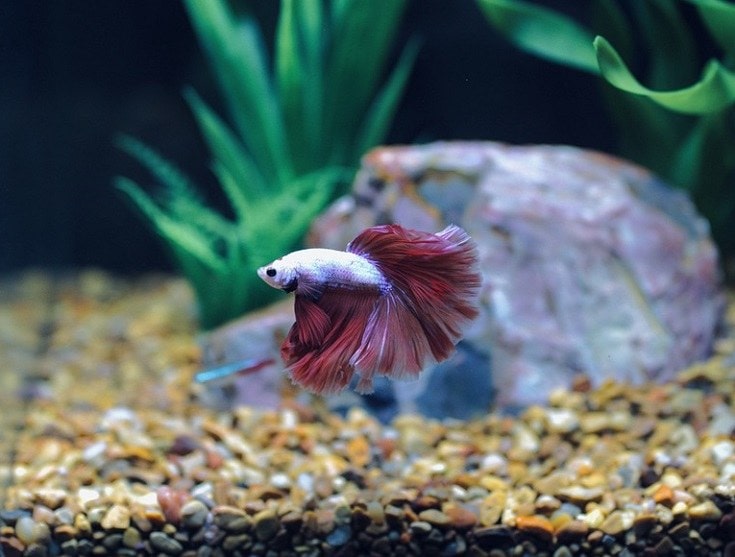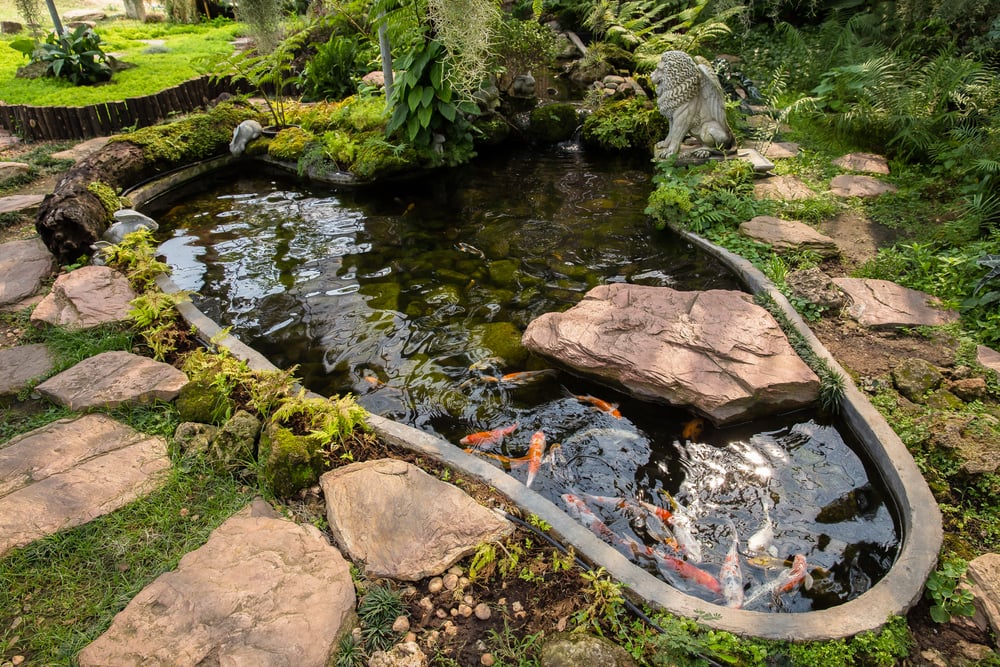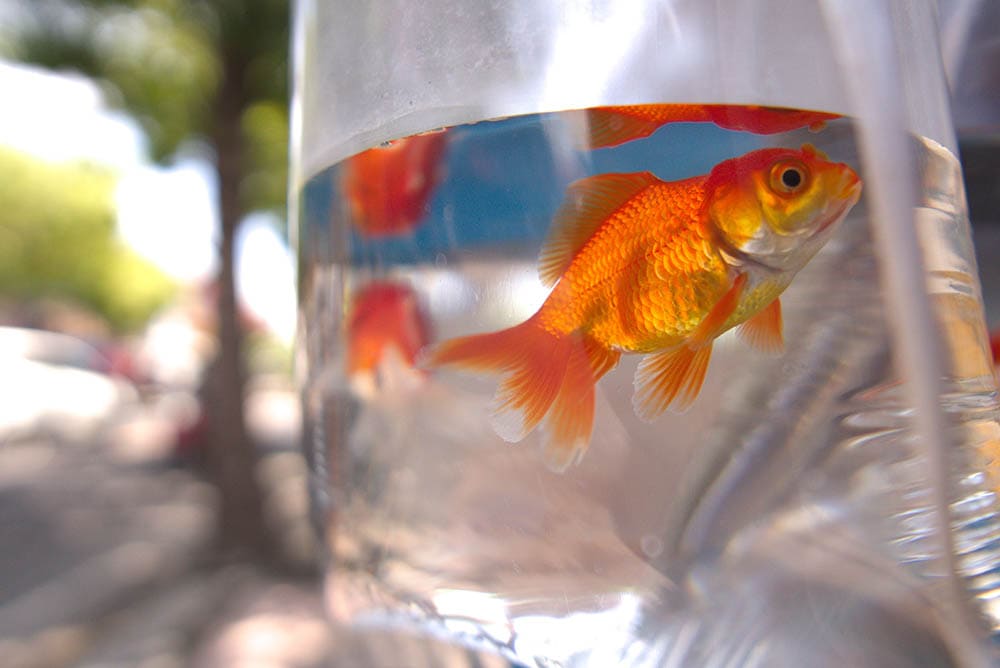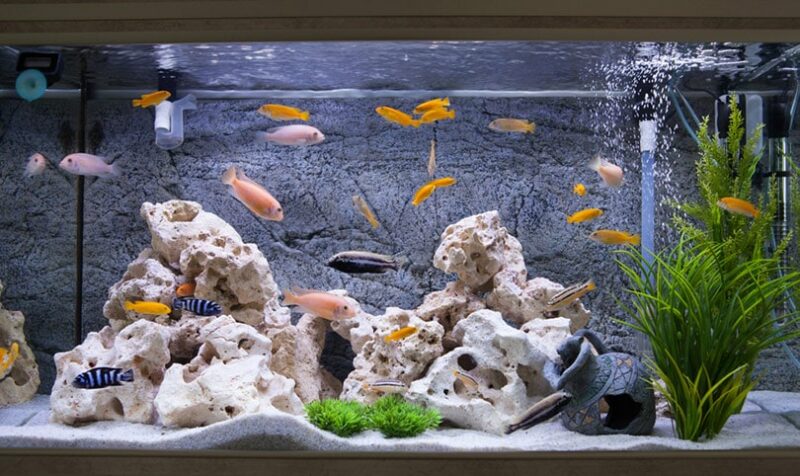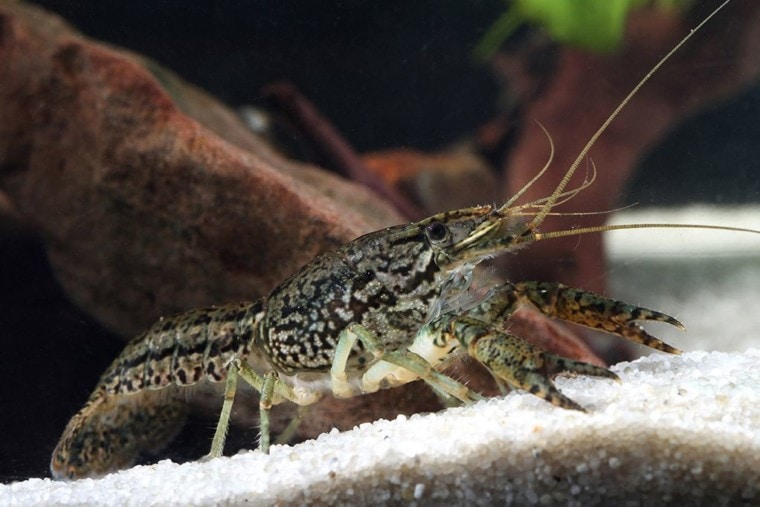
Crayfish are considered good eating in many places, like New Orleans. However, crayfish are also raised as beloved pets in many parts of the world. Pet crayfish come in different varieties, sizes, and personalities. Some pet crayfish are small, timid, and shy, while others are robust, curious, and even destructive.
Crayfish make excellent pets for kids and first-time animal owners. They are fairly easy to care for, they do not require much space to maintain a happy and healthy life, and they are fun to watch while they are active in their habitats. Here is everything that you need to know about taking care of a pet crayfish.

Crayfish Facts
These freshwater crustaceans are also referred to as crawdads and crawfish, depending on their geographic location. There are multiple species of crayfish, some of which can be found living in murky waters, like swamps and paddy fields. Other species of crayfish live where water runs freely, like streams.
With more than 500 species of crayfish in existence throughout the world, they are never hard to come by in nature if you know where to look for them. They are most commonly found in North America, Australia, and New Zealand.
This animal is are made up of several different body segments that each grow their own unique set of appendages. Crayfish typically feed on plants and living animals that are the same size or smaller than they are. They are known for their good eyesight and their interesting colors, which include pink, red, yellow, blue, and brown.
The average crayfish reaches puberty between the ages of 5 and 8 years old. They can live to be between 20 and 30 years in the wild. Unfortunately, they typically live only a fraction of that time in captivity. What this means for prospective pet crayfish owners is that there is no need to worry about a longtime commitment when raising one of these animals.
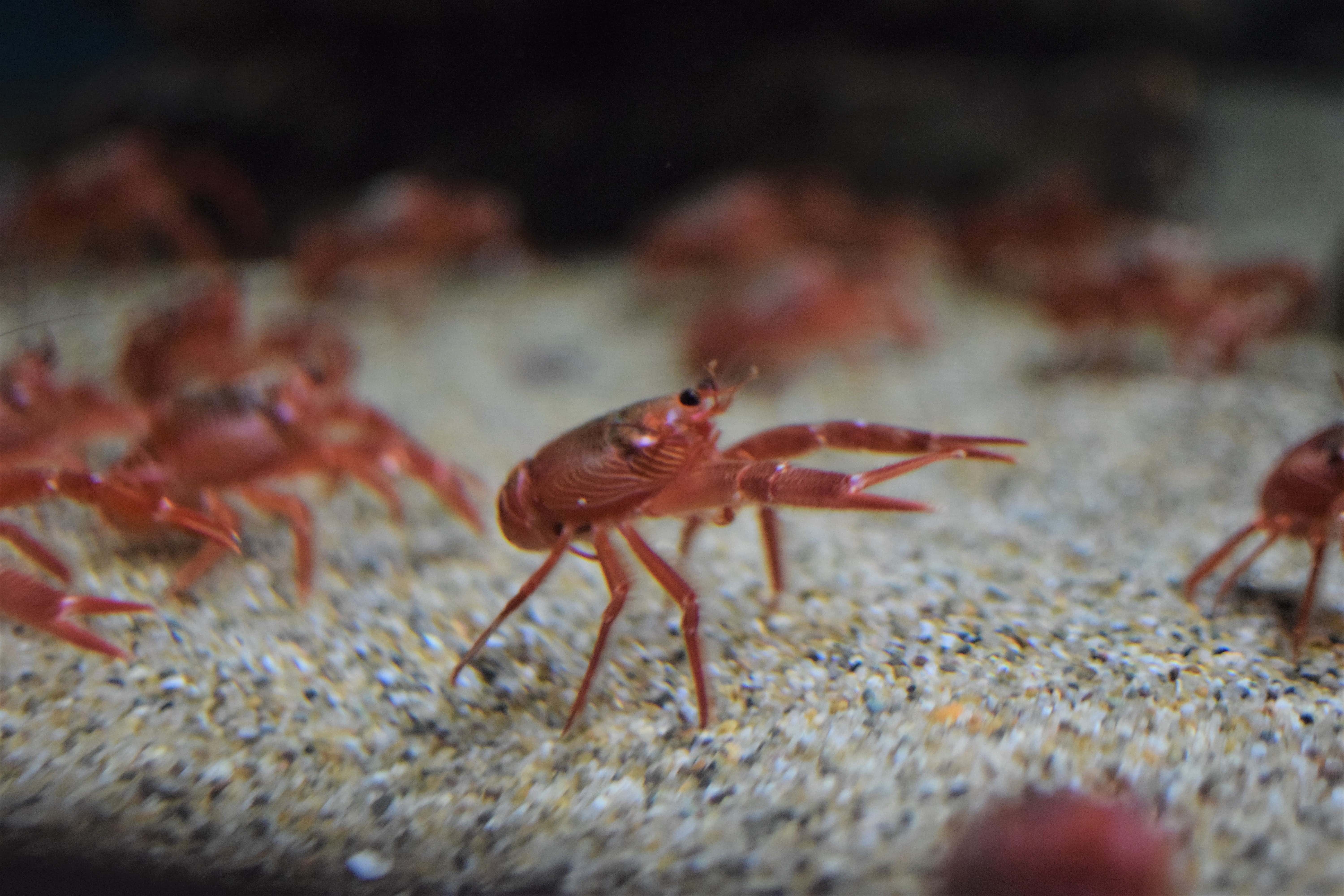
Are Crayfish Good Pets?
Crayfish make for excellent pets because they are hardy, active, and interesting to observe. Crayfish are even known to interact with their human companions on occasion. They cannot live with other types of freshwater fish, but their companionship is worth dedicating a tank just for their enjoyment.
There is no need to worry about whether they will get along with other pets because they will be contained in their own habitat. They do not require any special care or regular vet visits, which makes them affordable pets for families of all shapes and sizes to consider, whether in a small apartment or a large house.
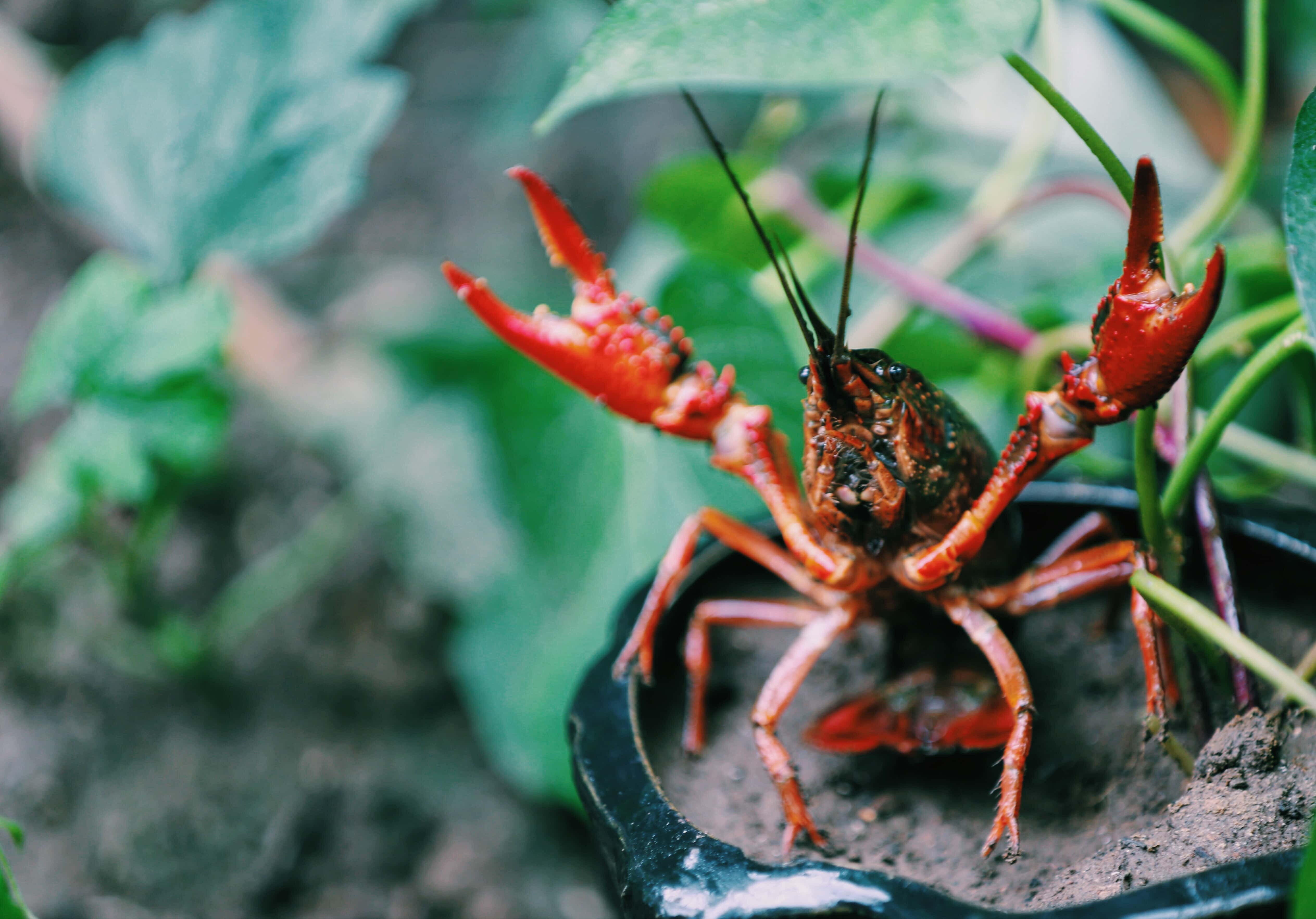
Where Can I Get a Pet Crayfish?
There are many different ways to acquire a pet crawfish for your household. A good place to start is the pet store, as many of them carry crayfish of many species to invest in. You can also find freshwater crayfish at aquatic stores where other fish and sea life are sold. Another way to source a crawfish for a pet is to catch it in its natural habitat and to bring it home and get it used to living in captivity.
No matter where you get your pet crayfish from, they will need to adapt to their new surroundings before they seem calm and comfortable in their habitat. You should also be sure that the crayfish that you bring home is in good health. If it is not moving around much and seems lethargic, there is a chance that they could have an illness that affects their quality of life. If in doubt, consult with an aquatic veterinarian or a general vet who specializes in crustaceans.

What Kind of Home Does My Pet Crayfish Need?
A pet crayfish can be kept in a freshwater aquarium, just like any freshwater fish. However they should be kept alone and not incorporated into tanks where other fish are already residing, or fighting may occur. Crayfish live happily alone and will explore every inch of their habitat, so their aquarium should be capped with a tight-fitting lid to prevent escape.
The bottom of a pet crayfish’s aquarium should be covered with pebbles or sand for comfort and to help keep the tank’s water clean between maintenance sessions. Crayfish like plants to snuggle in, structures to explore through, and toys to interact with throughout the day.
A filtering system should be installed on the aquarium to clean debris and waste from the water daily. Every 2 weeks or so, up to 15% of the aquarium’s water should be removed and replaced with fresh, clean water to maintain proper pH levels. You can use pH testing kits to verify that your crayfish’s water is balanced properly.
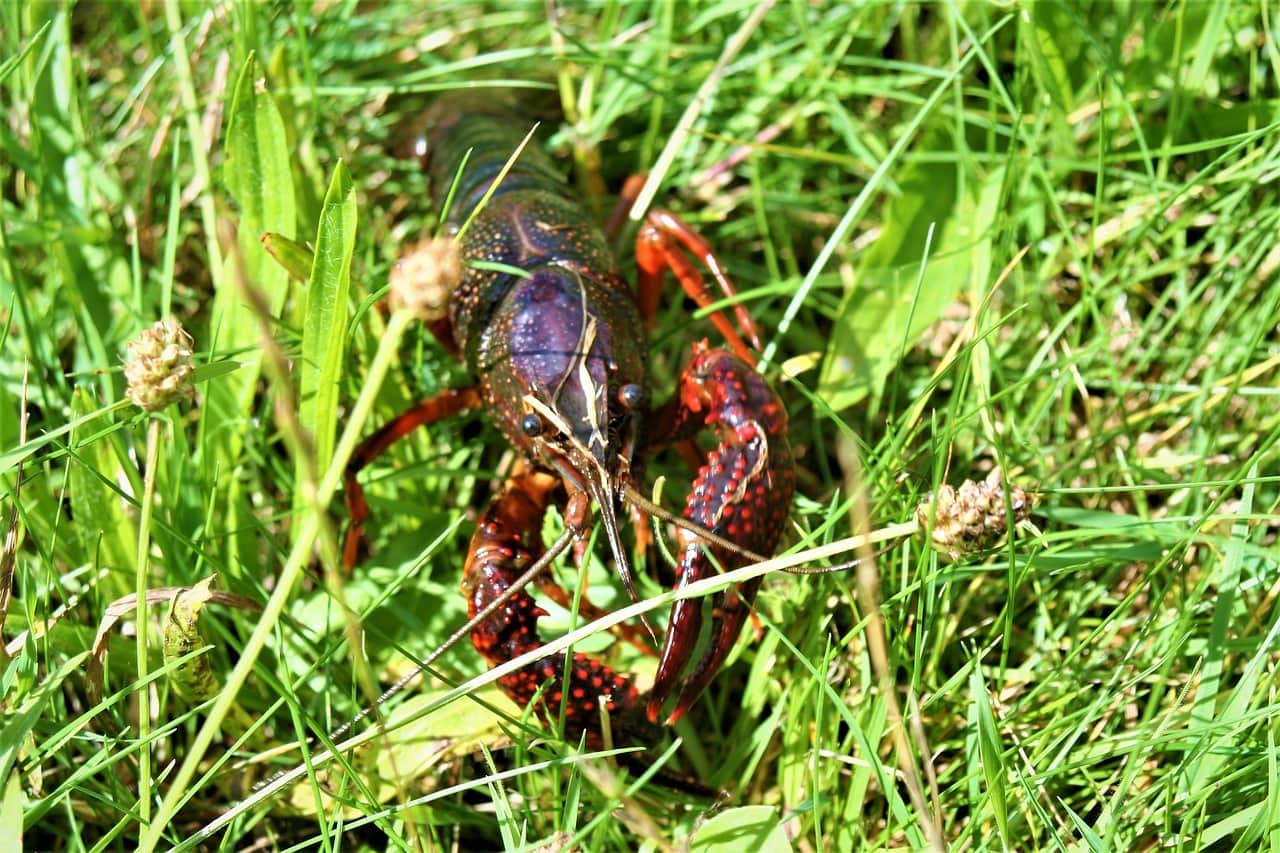
How Much Does It Cost to Own a Pet Crayfish?
Owning a pet crayfish is affordable compared to owning other types of animals, like cats, dogs, and even hamsters. After the initial habitat cost, which can run anywhere from $30 to $200, depending on the setup that you choose, you will likely spend just a few dollars a year on replacement parts and maintenance.
Your pet crayfish needs to eat, but commercial food should cost no more than $5-$10 a month. Pet crayfish rarely see veterinarians, so regular checkups and vaccinations do not need to be dealt with. Things like toys are optional costs that you may incur as time goes on.

What Should I Feed My Pet Crayfish?
Crayfish are omnivores and will eat just about anything that they come across. In the wild, they tend to feast on decaying animals and plant matter. In captivity, they will eat algae, which helps keep their aquarium clean over time. These animals enjoy grubbing on plants, and it is a good idea to incorporate live ones, such as java moss and hornwort, into their habitats so they always have a snack to rely on.
They will also eat any type of fish food that is offered to them. Many commercial crayfish foods on the market are designed to meet all the nutritional needs of this crustacean. Just follow the feeding directions on the packaging to keep your crayfish healthy.
You can also offer your crayfish small shrimp and other fish to feed on occasion for extra protein. Other foods that can be fed to pet crayfish include shrimp pellets, dried seaweed, dried squid, and even bloodworms.
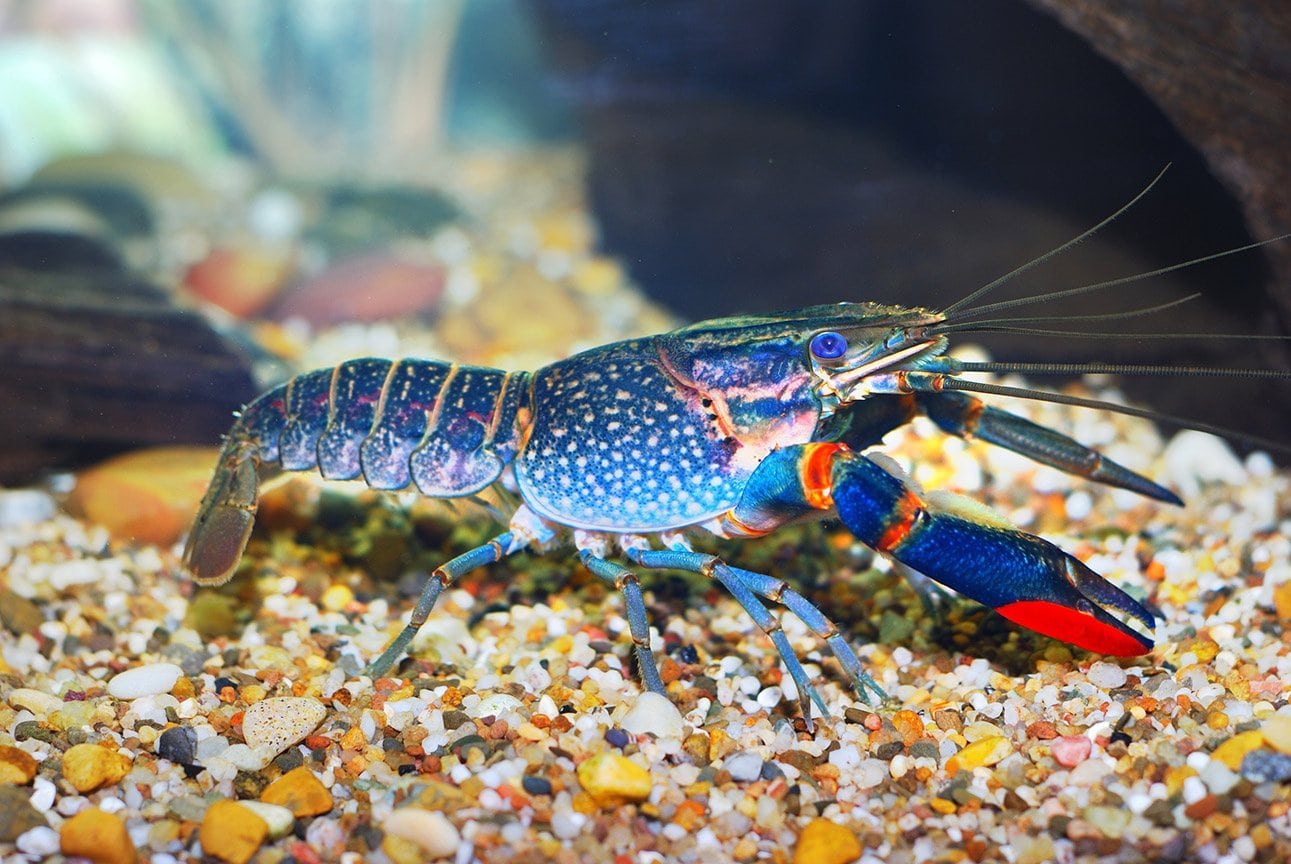
How Do I Take Care of My Pet Crayfish?
Caring for a pet crayfish is easy to do. These animals should never leave their tank unless the habitat is being cleaned or in case of an emergency of some kind. Crayfish have pinchers as lobsters do, so they could injure someone who tries to pick them up and take them out of their habitat. These animals are best left undisturbed in their habitats, where they can be observed from the exterior.
But this does not mean that crayfish are not fun to have around. They are active and can be comical as they make their way through interactive items and plant life. They are exciting to watch when they hunt down live shrimp for food. They will even come up to the walls of their habitat to say hi to human companions whom they recognize over time.
Handling
If you must handle your pet crayfish, it is important to grab the crustacean from behind. Grab the main part of their body, behind their pinchers to minimize the risk of being pinched. It is best to place them directly into a holding container so they do not try to wiggle and fight their way out of your hands.

Enjoying
There are a couple of different ways that you can enjoy the company of a pet crayfish other than by watching them from the sidelines. Using a tree branch or leaves from a plant, you can interact with your crayfish inside of their habitat. Just dip the branch or leaf into the water, and slowly move it around near your crayfish.
The animal should start to show interest in it by following it around or trying to pinch it. Another way to enjoy the company of your crayfish is to lightly tap on the glass of their habitat to get their attention. Try to get your pet to follow your finger up and down and side to side.
Cleaning
Crayfish create a great deal of debris because they shed their exterior skin during molting season, and they break plant life down quickly. Therefore, it is important to clean out their habitat a couple of times a month to ensure good health. This can be done by removing a portion of the water, up to about 15%, and then replacing it with clean water. Using a vacuum to clean the gravel or sand on the bottom of the habitat is a good idea too.
If the water in the habitat is murky and hard to clearly see through, you may need to move your crayfish to a holding container and replace all the water in their habitat. Make sure that the water is properly balanced by checking the pH, and ensure that a working filter is running before putting your crayfish back into their habitat.
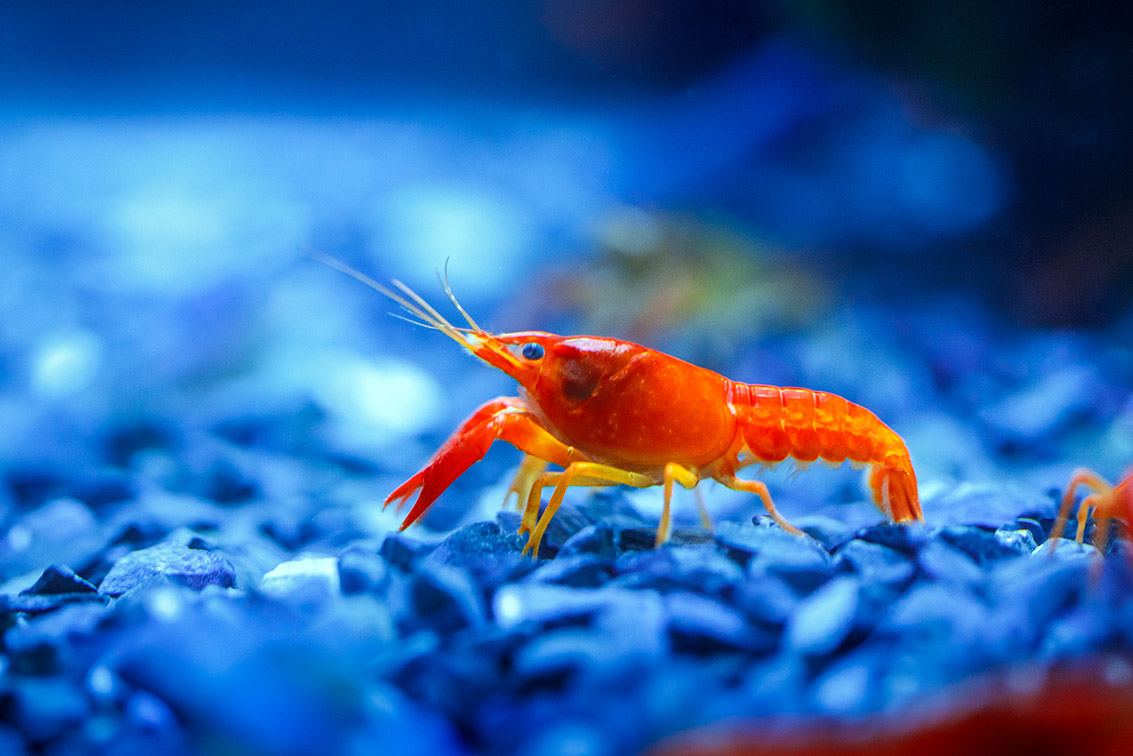
How Do I Know If My Pet Crayfish Is Sick?
The first thing to know is that crayfish molt, which means that they shed their exoskeletons to make room for larger, stronger exoskeletons as they age. This process typically results in a lack of interest in food until the molting process is finished, which can make it seem like the animal is ill. However, becoming lethargic and not eating is typical behavior for a molting crayfish.
The molting process only lasts about 24 hours for younger crayfish, while it may take up to 5 days for an adult to completely molt. Their lack of interest in food and activity should not be a concern during the molting process. Your crayfish should perk up and start eating again once the molting process is complete.
If your crayfish is acting strange when there are no signs of molting, they may have an illness that needs to be addressed. Here are the most common crayfish health conditions to keep an eye out for.
Crayfish Plague. Affecting North American crayfish species, this disease is caused by a fungus. Signs of illness include whitening on the body, especially on the belly and limbs. They no longer have an aversion to bright light as they normally would, so they may be seen in open water during the middle of the day, when they should be hiding out in plants or caves.
If the illness becomes terminal, the affected crayfish will lose their balance and might start lying on their side before dying. Once a crayfish has become infected, there is no cure, unfortunately. The habitat can be disinfected with sodium hypochlorite so new crayfish introduced to the habitat will not become infected and get ill.
Parasites. Crayfish can become infected by parasites just like other animals can. Being infected with parasites could result in lethargy, a distended belly, a voracious appetite, and a lack of interest in exploring. If you notice signs of parasites, you can use a commercial parasite treatment designed for animals like crayfish. It is typically added to the habitat’s water.

Final Thoughts
Crayfish are fun pets that are easy to take care of as time goes on. They do not require much attention, and they never mind being left behind at home, like a dog or even a cat might. They are fun to watch and do not make any noise that will distract or irritate their human companions. Hopefully, our care guide will make it easy for you to transition to crayfish ownership and to fully enjoy your new pet for many years to come.
Featured Image Credit: Geza Farkas, Shutterstock
